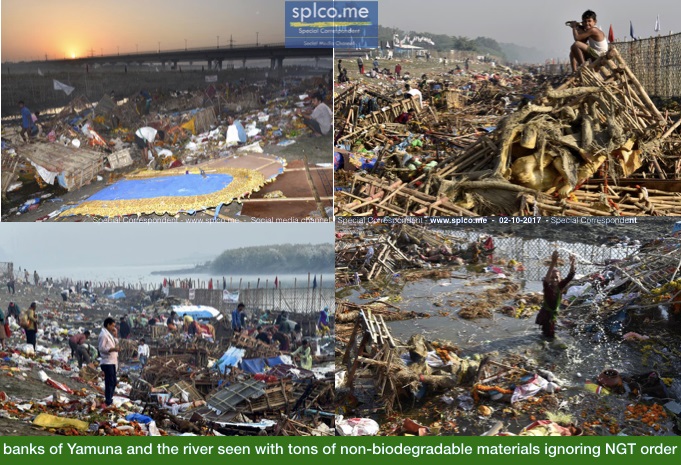The National Green Tribunal in 2015 had banned immersion of idols made from non-biodegradable material, such as quick-setting gypsum plaster, also known as Plaster of Paris, or plastic in the Yamuna

It had said that idol immersion should be done from a designated place so that the river doesn’t get polluted. The bench, in an earlier order, prohibited throwing of puja material from anywhere but the designated ghats.
But two days after Durga Puja came to an end with much fanfare, piles of debris have left the Yamuna choked on Sunday, a day after idols from nearly 200 Durga Pujas pandals in Delhi, Gurgaon, Noida, Ghaziabad, Faridabad and surrounding areas made way to the designated ghats for immersions.
Raveendra Kumar, executive engineer at the department of irrigation and flood control, said that they had built enclosures on the banks of the river for the devotees to drop their insoluble wastes, and the waters had enclosures too, to avoid the flow of debris into the river. He added that during the immersions, they had JCBs on standby to help pull out the idols as when they were immersed.
However, many people do not dispose of insoluble materials before the immersion, and there is no real testing of the materials used to build the idols. “Compliance is very poor. I don’t think anybody has been fined for not using biodegradable materials since the order,” complaints CR Babu, an ecologist who is part of the seven member committee appointed by the NGT.
Every year after the idol immersions, the condition of the Yamuna, already considered as one of the most polluted rivers in the country, worsens. Last year, the levels of Total Suspended Solids, Biochemical oxygen demand and Dissolved oxygen deteriorated significantly at the six designated ghats.














